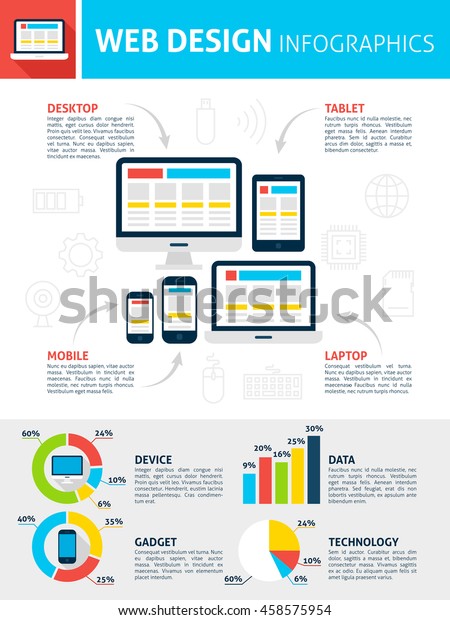Prepare Yourself To Trip Via Time And Find Just How Web Sites Have Come To Be A Lot More Advanced, Straightforward, And Aesthetically Spectacular
Prepare Yourself To Trip Via Time And Find Just How Web Sites Have Come To Be A Lot More Advanced, Straightforward, And Aesthetically Spectacular
Blog Article
Short Article Produced By-Hartley Hyldgaard
In the past, sites were simple and focused on information. Navigation was straight, and design was for desktops. Currently, individual experience is crucial. Information guides designs for simple navigating. Responsive formats fit different gadgets. Today, dark mode minimizes pressure, and minimal food selections enhance navigation. https://www.forbes.com/sites/forbesagencycouncil/2022/07/01/scaling-e-commerce-seo-tips-for-growth/ involve individuals, and vibrant visuals attract attention. AI assimilation improves interaction. See exactly how design has progressed to boost your on-line trip.
Early Days of Website Design
In the very early days of web design, simplicity reigned supreme. Internet sites were fundamental, with limited shades, font styles, and formats. https://www.forbes.com/sites/forbesagencycouncil/2022/04/29/15-key-marketing-trends-brands-need-to-take-note-of-in-2022/ was on giving info instead of flashy visuals. Individuals accessed the web with slow-moving dial-up links, so speed and capability were crucial.
Navigation menus were straightforward, usually located on top or side of the web page. Websites were developed for computer, as mobile surfing had not been yet common. Material was king, and developers focused on very easy readability over intricate style components.
HTML was the key coding language used, and developers had to work within its constraints. Computer animations and interactive attributes were marginal contrasted to today's criteria. Websites were static, with little dynamic content or personalized user experiences.
Surge of User-Focused Layout
With the evolution of internet site style, a shift in the direction of user-focused style concepts has actually become progressively popular. Today, creating websites that prioritize customer experience is important for engaging visitors and attaining business goals. User-focused design entails recognizing the needs, choices, and behaviors of your target market to tailor the site's format, content, and includes appropriately.
Developers currently carry out extensive research study, such as user surveys and functionality testing, to gather understandings and feedback straight from users. This data-driven technique helps in creating user-friendly navigating, clear calls-to-action, and visually enticing interfaces that resonate with visitors. By placing the customer at the facility of the design procedure, web sites can deliver a much more personalized and pleasurable experience.
Receptive style has actually likewise become a crucial facet of user-focused design, making sure that web sites are enhanced for various devices and screen sizes. This versatility boosts access and functionality, dealing with the varied means customers engage with internet sites today. Essentially, the increase of user-focused style indicates a shift in the direction of creating digital experiences that focus on the needs and assumptions of completion user.
Modern Trends in Website Design
Discover the latest patterns shaping web design today. One popular trend is dark mode style, offering a sleek and modern look while reducing eye stress in low-light environments. One more essential pattern is minimal navigation, simplifying menus and enhancing individual experience by concentrating on essential elements. Including micro-interactions, such as computer animated buttons or scrolling effects, can create an extra engaging and interactive web site. Responsive style remains critical, guaranteeing smooth user experiences across various tools. Furthermore, using vibrant typography and unbalanced layouts can add visual passion and accentuate details material.
Integrating AI innovation, like chatbots for customer assistance or tailored suggestions, boosts customer engagement and streamlines procedures. Accessibility has also end up being a substantial pattern, with designers focusing on inclusive design practices to satisfy varied individual demands. Accepting sustainability by maximizing site efficiency for rate and effectiveness is an additional arising trend in website design. Teaming up with customer feedback and data analytics to iterate and improve design constantly is essential for remaining pertinent in the ever-evolving electronic landscape. By accepting these modern trends, you can produce an aesthetically appealing, user-friendly website that resonates with your target market.
Verdict
As you assess the advancement of web site design from the early days to currently, you can see just how user-focused design has become the driving force behind modern-day patterns.
Accept the trip of modification and adjustment in website design, always maintaining the individual experience at the center.
Tippingpointdigital
Keep current with the most recent trends and technologies, and never stop advancing your strategy to develop aesthetically spectacular and straightforward web sites.
Evolve, adapt, and develop - the future of web design remains in your hands.
